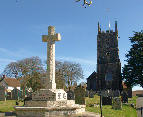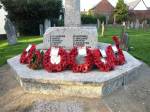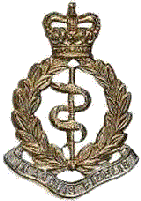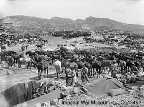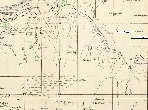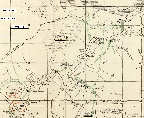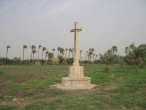Alfred Wallace Harvey was born in 1870 at Canterbury, Christchurch, New Zealand, the son of the Rev. Bache Wright Harvey, D.D. He was a British subject, his parents presumably having travelled to New Zealand for a clerical posting. He trained at Cambridge where he obtained his B.A. in 1900, before moving to St. Thomas’ Hospital, London, where he obtained his MRCS and LSA in 1905. He was a Fellow of the Royal Society of Medicine and a Member of the British Medical Association, and, possibly as an additional appointment, Medical Officer to the Post Office. During 1907-8 he was a House Physician and House Surgeon to the Queen’s Hospital for Children in the Hackney Road, East London, and also Resident Medical Officer to the West Norfolk and Lynn Hospital. During this time Dr. Harvey published two articles in medical Journals concerning children’s diseases - ‘Illustrations in a case of Maliga. Endocarditis’ and ‘Illustrations in a Cade of Craniotabes’. By the spring of 1910 Dr. Harvey had moved to Winkleigh as a General Practitioner, following the death of his friend, Dr. Norman. In June 1910 the Winkleigh Parish Council recorded that Dr. Harvey, who was now living at Goodleigh House, had complained of the lack of telegraphic communication between Winkleigh and Exeter, a situation that was not only inconvenient but positively dangerous. Dr. Harvey stated that recently he had had to communicate on a matter of life and death and a message had to be sent by road. The Parish Council resolved to ask the Postal authorities to put the matter right. The 1911 census records that unmarried and now 41, he was continuing to live at Goodleigh House, sharing it with Elizabeth Norman aged 58, Dr. Norman’s widow who had been born in Edinburgh, together with her three daughters. When Dr. Harvey joined the Royal Army Medical Corps, Winkleigh was cared for temporarily by Dr. Lush of Dolton, before the arrival of Dr. Farr (who lived at ‘Merryfield’ on the Eggesford Road, a road sometimes called ‘New Town’) and by Dr. Harding who lived in the Square.
Dr. Harvey enlisted in 1915, his medal record showing the date 22nd March 1915. He was commisioned on 2nd April 1915 as Acting Lieutenant and given the normal two weeks training (ref. Army List 1707A August 1915). The army was short of doctors: he was commissioned at once and given the rank of temporary Lieutenant, before being posted to the 55th Brigade Ammunition Column of the Royal Field Artillery, a New Army brigade which was part of the 10th (Irish) Division. The 10th Division came into existence as a result of Army Order No. 324, issued on 21 August 1914, which authorised the formation of the six new Divisions of K1. It was formed of volunteers, under the administration of Irish Command. After initial training at the regimental depots, the units of the Division moved in 1915 to the Curragh, Newbridge and Kildare, where training in Brigade strength began. In May 1915 the Division moved to England and concentrated around Basingstoke, where it was inspected by Lord Kitchener at Hackwood Park on 28th/29th May. On 27th June the Division received orders to prepare for service in Gallipoli. Lieutenant Harvey might have been with the Brigade in Ireland, or perhaps taking a short introductory course on army life, but he was certainly with them in Basingstoke. However, when the 1Oth Division went to Gallipoli the 55th Brigade RFA remained behind, and it was not until 30th August 1915 that the Brigade rejoined the Division at Suvla Bay.
A Brigade was the basic tactical unit of the field artillery of the British army in the Great War. The Brigade HQ was in command of 4 Batteries and an Ammunition Column. Usually lettered A to D, a battery numbered 198 heads at full establishment. Each was commanded by a Major or Captain, with a Captain as Second-in-Command, and 3 Lieutenants or Second-Lieutenants in charge of 2-gun sections. At the outbreak of war, field gun batteries of the regular army had 6 guns, and those of the Territorial Force 4 guns. The standard weapons, which did not alter during the war other than by technical improvements, were the 18-lbr field gun, and the 4.5-inch howitzer. At full establishment, a brigade of 18-lbr field guns consisted of 795 men of whom 23 were officers. For a 4.5-inch howitzer brigade, this was 755 and 22. The Brigade was usually commanded by an officer with the rank of Lieutenant-Colonel. Brigade HQ also had two other officers: an Adjutant (Captain or Lieutenant) and an Orderly Officer, who was responsible for stores and transport, an officer of the Royal Army Medical Corps and an officer of the Veterinary Corps. Brigade HQ also included a Sergeant-Major plus two Corporals, two Bombardiers, nine Drivers, 7 Gunners, a Clerk, and a Trumpeter. These filled roles as signallers, telephonists and assisted with range-taking duties. A Corporal and 3 privates of the Royal Army Medical Corps were attached for water duties; 8 Gunners acted as Officers Batmen (personal servants), and 2 as Orderlies for the Medical Officer. The vast amounts of ammunition that were required in action came down the line from the Divisional ammunition park to the Brigade Ammunition Column, and thence to the Battery positions. A battery would require an immediate stock of at least 176 rounds per gun, with a further 76 rounds per gun stored in the brigade ammunition column.
Lieutenant, later Captain, Harvey was attached as medical officer to the Brigade Ammunition Column. An Ammunition Column was commanded by a Captain, with 3 Lieutenants or Second-Lieutenants, and was responsible for bringing ammunition and other supplies to the Battery positions from the Divisional dumps. Brigade Ammunition Columns disappeared in May 1916, when they were reoganised into Divisional Ammunition Columns. As Medical Officer of the Column, Captain Harvey would have had a team of about 8 orderlies, commanded by a Bombardier (Corporal) or Sergeant.
In order to follow the story of Captain Harvey’s service at Gallipoli with the 55th Brigade Royal Artillery Ammunition Column, it is necessary to have a brief outline of the events at Suvla from the arrival of the 10th and 11th Divisions on 6th/7th August, the date of the first landing at Suvla Bay, commanded by Lieutenant-General Sir Federick Stopford, to Sir Ian Hamilton’s dispatch dated 11th December 1915. Follow the link to Suvla Bay on the right for a detailed descrption of the Suvla Bay invasion.
By the time Captain Harvey had arrived at Suvla on 12th November, the war in Gallipoli had resorted to stalemate on all three fronts. Deeper trenches were dug, lines straightened out, saps and tunnels constructed. Snipers and bombers were active on both sides, but owing to the acute shortage of shells, what little artillery there was had to be rationed to firing only two shells per day. The Turkish artillery was no better; one out of three shells failed to explode. The Allied troops were decimated with sickness - an average of 600 men a day were being evacuated from the Peninsula, and most units were only just above half-strength. Winter was approaching when life in the open trenches would become impossible. All kinds of stores were urgently needed - galvanised iron, wood, trench pumps, horse blankets - all of which was in very short supply. Sir Charles Monro arrived in late October to assess the situation, but already by the time the 55thth Brigade, Royal Artillery, disembarked at West beach at 10.00 am on 30th August, no further attacks at Suvla were contemplated by Major-General de Lisle.
There was grudging acceptance that in order to maintain the Suvla perimeter that had been established it was vital to bring in artillery reinforcements, but it was a slow process. The entire 55th Brigade, 10th Division, entrained at Basingstoke on 6th July en route for Devonport, except for the Brigade Ammunition Column which was left behind. From there they sailed via Malta and Alexandria to Cairo, resting at Mena Camp, Cairo (near the pyramids). ‘A’ Battery went first to the Peninsula, embarking on the HMT ‘Kingstonian’ on 9th August arriving in Mudros on 13th. Here they waited a month before embarking on 9th September on the steam tug ‘Bovry’, with their guns and wagons on the ‘Queen Louise’ and leaving many horses and drivers still in camp, reaching West Beach on 10th. On12th September gun positions were established at Lala Baba, registration took place on 15th and the battery was in action from 16th to 20th. Meanwhile, ‘B’, ‘C’ and ‘D’ batteries remained at Mena Camp, Cairo, from 21st July until 28th August when the rest of the Brigade, but still without the Ammunition Column, finally sailed for Lemnos on the HMT ‘Kingstonian’, landing at 10.00 a.m. on 30th at the West Beach. On 31st August ‘B’ Battery joined ‘A’ into positions on Lala Baba, under shell fire. They remained in position there, in support of the 11th and 29th Divisions, occasionally firing on Chocolate Hill and Hill 60. ‘C’ Battery was in position at Azmak Dere, a watered ravine which runs south-west into the north side of the Salt Lake, with opportunities to give supporting fire onto the Kiretch Tepe Ridge, on one occasion helping to repulse a Turkish attack on Jephson’s Post. Jephson’s Post marked the furthest advance made on the 8th August, named after Major Jephson who died there. ’D’ Battery moved into the Anzac area, taking up a position on the Damakjelik Bair near the South Wales Borderers’ Gully facing northwards, which enabled them to enfilade the Turkish trenches on Scimitar Hill, doing excellent work. There was of course very little ammunition available and it was not until 6th November that the Brigade Ammunition Column finally disembarked at West Beach to join the Brigade. By then West Beach, just south of Sulva Point had become a major base including Kangaroo Beach, West Beach harbour and Little West Beach. It included tramways, pipelines, depots, magazines and other essential military offices, including the 32nd Field Ambulance complete with marquees and all the stores they required.
Six days later, on 12th November, the Brigade war diary records: Lieutenant A.W.Harvey RAMC joined the Brigade and was posted to Headquarters.
On 17th November ‘A’ and ‘B’ Batteries moved from Lala Baba to join ‘C’ Battery at Azmak Dere,. Today, the cemetery by the Dere contains casualties from many isolated areas, including 114 graves of the 1st/5th Norfolks, which included the so-called ‘vanished battalion’ of the Sandringham company. Here a small draft of 10 drivers and 10 gunners arrived from Egypt as reinforcements. Behind the scenes, however, events were moving on fast after Monro finally arrived at Imbros on October 28th. After a brief inspection of the three fronts Monro advised evacuation, despite the losses that would, it was assumed, be assured. Kitchener’s response was to reject the advice and to send Monro to Salonika, but he was reprieved. Kitchener was dreaming of a new landing at Bulair, but it was quickly abandoned, and Monro’s advice taken seriously. Kitchener himself arrived at Anzac Cove on November 13th to see things for himself and on 22nd recommended evacuation. It was the only decision to make: there was no possibility of an offensive, and the Germans were now supplying the Turks both with near-perfect ammunition and new Austrian siege guns which were causing devastation at Suvla and Lone Pine.
Lieutenant Harvey and his medical orderlies were about to become extremely busy. During the night of 26th/27th November a violent thunderstorm hit the peninsula, with huge seas, hail, pelting rain and a hurricane from the north. The next day heavy snow fell, the first for 40 years. At Suvla the water poured out of the hills and turned the trenches into raging creeks. Men climbed out and lit fires on the parapets in full view of the Turks. At least 200 men either froze to death or were drowned at Suvla. 5000 more were evacuated with severe frostbite. Typical of what was happening, the Azmak Dere flooded completely. ‘C’ Battery’s position was underwater and the three Batteries were withdrawn back to Lala Baba. On 28th Chocolate Hill and the road to ‘Big Anafarta’ across the Suvla plain were shelled - with the arrival of the Ammunition Column more shells had become available. But all was coming to an end. The remaining Battery, ‘D’ Battery, was also withdrawn to Lala Baba and proceeded to the ‘A’ reserve area in readiness for evacuation, to be taken to Imbros. Still the Brigade remained in action, on 5th December firing on Turkish positions on Scimitar Hill and other targets, to assist the deception that all was normal, providing the cover for the gradual evacuation of the troops. By now there were 80,000 men and 200 guns at Suvla and Anzac, and they were evacuated in gradual stages. Half the men would be off by December 18th, the other half on 18th and 19th. To get the Turks used to silences a ‘silent stunt’ was ordered - there was no firing of any kind from 24th to 27th November (the 55th Brigade had used the time to withdraw ‘A’ and ‘B’ Batteries to Lala Baba).
The evacuation of the 55th Brigade illustrates very well how the whole withdrawal was organised. On 12th December the 55th Brigade began the evacuation with ‘D’ Battery, with 2 guns and limbers, 1 G.S. wagon and the water cart embarking from the West Pier Beach. Two days later, on 14th ,‘D’ Battery evacuated 1 officer, 24 O.R.s, 2 guns, 2 ammunition wagons, 2 water-carts, 1 G.S. wagon and the bulk of the H.Q. Staff on HMT ‘Beachy’. On 18th it was the turn of ‘B’ Battery and most of the remainder of the H.Q. staff, 3 officers and 39 O.R.s., the sea completely calm. On 19th, ‘A’ and ‘C’ Batteries and the remainder of the Brigade including Lt.Col. Peck and 1 officer, probably the Adjutant, embarked on the ‘Beachy’. From the deck they would have watched as engineers fired a huge explosion planted in tunnels under the Nek, killing at least 70 Turks. The last troops left Suvla at 5.00 am. The supply depot at West Beach was fired as they left. From Imbros the whole Brigade was to move to Mudros on 20th, remaining there until the 28th when they were first embarked on HMT ‘Southend’ and then trans-shipped to the HMT ‘Tunisian’, finally leaving on 30th and arriving back at Alexandria on 2nd January. They went first to Wardian Camp on 3rd, then to Victoria Camp on 18th, where they stayed until 31st January 1916.
So ended the first phase of Lieutenant Harvey’s military service. The 10th Division was now destined to move to Salonika without its artillery and as a result the 55th Brigade joined 13th Division in February 1916, heroes of Gallipoli, but which was now engaged in holding forward posts in the Suez Canal defences. To understand the next sequence of events, please link with the special account of The Tigris Corps, January to April 1926 using the link on the top right of this page. The account of the 55th Brigade Royal Field Artillery should be read in conjunction with the wider history of the Tigris Corps, and in particular the part played by the 13th Division.
Captain Harvey’s war in Mesopotamia began on 19th February 1916, when the 13th Division was ordered to move from Egypt to Mesopotamia, but because of the transport difficulties it was not until the 27th March that the Division finally assembled near Sheikh Sa’ad (above Ali Gharbi) and came under orders of the Tigris Corps. The 55th Brigade Royal Field Artillery left Alexandria for Port Said, embarking on HMT ‘Leomedan’. After passing down the Suez Canal they stopped off at Kuwait, finally reaching Basra via the Shatt al Arab, and embarking up the Tigris to reach first Kurna and then Ezra’s Tomb by 27th March. No further river transport was then available and the journey became a nightmare. Two days of marching brought the 55th Brigade further up river to the main base at Amara, reached on 29th March. Here they were delayed by violent thunderstorms, but on April 5th the brigade set off to reach, by slow stages, the village of Ali Ghabi which at other times of the year could have been reached on foot in under a week, whereas hauling sixteen field-guns together with all the transport and supplies by road up-river in atrocious conditions was a very slow process. The 55th Brigade consisted of four batteries, each with four 18pdr field guns, half the Divisional artillery. The 66th Brigade also consisted of four batteries, but with the addition of one howitzer battery of four guns.
The 12 mile march on 5th April, the first day of their journey to Ali Ghabi, brought them to Fodayin. It was a very difficult route over by now swampy ground, with no road and at best only a wheel track. The Brigade left at 8.20 am, the head of the column arriving by 2.00 pm, the rear only by 7.00 pm, with the mule transport carts even more delayed. On the same day the 13th Division had made their attack to break out from the Hanna position, but without the assistance of their artillery. On 6th the Brigade pressed on a further 11 miles to reach Kalat Sultan. The conditions were abominable, with more swamps, and with the carts and wagons stuck all night. Thunderstorms poured down, the camp flooded and the Tigris overflowed. On the 7th April teams of 10 horses were sent out to bring in each wagon, and only by by 5.00 pm had all finally arrived. On 8th April a further 8 miles marching brought the column to Wailshiyah by 5.00 pm, using double teams for the carts and much manhandling of wagons, guns and limbers. Thankfully a dry space for a camp was found for the men, horses and mules who had begun to arrive by mid-day. The march continued. On the 9th, the day of the renewed attack by 13th Division, a further 10 miles brought them to Ali Als Shargi over increasingly swampy ground involving double teams and exhausting manhandling. Although the head of the column arrived at 10.45 am, the last were not in until 7.30 pm. That night there were further thunderstorms. After a day’s rest an attempt was made on 11th to reach Shafir but the column was now wading knee deep over soft mud and more rain fell in the night. Finally, on 12th, 5 ration boats were sent up river to Ali Gharbi together with boats for half the ammunition that was being carried in order to lighten the wagons, and this enabled the column to reach Hassain Creek on 13th after yet more rain.
On 14th they were still two miles below Ali Gharbi, looking for a dry place to camp. It rained all day and all night and the war-diary records ‘the whole echelon was badly bogged down’. On the 15th attempts were made to bring in the wagons that were completely stuck in the mud. By now the men were on two-thirds rations, with the horses reduced to only 6 lbs of bad grain and no forage. Completely unable to move and with increasing shortages of rations, forage and grain, the column had to wait where they were. Medical services were stretched and the horses and mules were suffering grievously. Some hay was brought up by boat on the 22nd April but by 25th this was all gone and the horses were surviving on no more than a half ration of grain. Not surprisingly, by 26th, 48 horses had to be evacuated to remounts convalescence.
The ammunition column, being lighter, had a slightly easier journey. They had left Amara on April 5th with the main column, and by 15th had reached Ali Gharbi, where they waited until 30th April for the main column of the Brigade to catch up. However, on 29th April the Kut garrison had surrendered, so the whole purpose of the relief operation was now cancelled. On 1st May, the day after their arrival at Ali Gharbi, cholera struck the Relief Force, and the first deaths of 5 troopers of the Indian cavalry were reported. To try and find somewhere less filthy, the Brigade moved on 4th May to ground north of an old fort a little up river. By 13th May the weather had improved, the ground hardened and the brigade set off again up the line towards Sheik Sa’ad. After two days the objective was reached: the brigade crossed the a smaller tributary running into the Tigris - an operation that took just under eight hours, but by 5.00 pm all had arrived into what proved little more than a muddy swamp for a camping ground. No less than 500 empty grain sacks had to be filled with mud to make something resembling a hard standing for men and horses, but even this secured little permanent improvement. With one case of cholera the 55th Brigade then remained in quarantine for two days, 16th-18th May, before being allowed to proceed beyond Sheik Sa’ad, but on 19th they crossed the river by a pontoon bridge to camp just north of the village. The Brigade moved again on 23rd back to the evacuated Cavalry Brigade area at Ali Gharbi - described in the war diary as ‘ground dirty beyond description’ - employed on very heavy fatigue work from 24th April to 12th May, strengthening the defences. An isolation camp for the increasing number of cholera cases was found at Gommarah: 13 drivers had fallen sick and all contacts had to be sent to isolation. On 13th May the Brigade was ordered to move up-river again, returning to Sheik Sa’ad, a journey that took two days, while suspected cholera cases were sent to an isolation camp at Gomorrah, each man returning, if not affected, after 5 or 6 days.
June found the Brigade still at Sheik Sa’ad. It was a dangerous place, the camp constantly infiltrated by murderous Arabs, intent on stealing all they could get. The Brigade war diary records that on 3rd June 2nd/Lt. Cathcart was shot and killed by mounted Arabs near Lot’s Mound while reconnoitring in front of the Sheik Sa’ad defences. Plans were now made for the Brigade to return downstream to Amara, but it was not until 3rd September that this was accomplished. In the meantime various Arab villages were raided in an attempt to seek out and kill Arab marauders that were a constant menace to the security of the camp at Sheik Sa’ad, expeditions that sometimes took place in daylight, sometimes at night. Turkish snipers, too, were a constant menace, especially those in a ruined building known as ‘Round Fort’. Eleven miles up-river from Sheik Sa’ad the Brigade’s four Batteries were near the front, and the Brigade war-diary proudly records that the ammunition column were now fully connected with them by telephone. Ammunition was in short supply, the front line was a stalemate and firing on Turkish working parties and snipers was expending a mere 12 rounds per day. The front had quietened down to the extent that on the 13th Divisional front a truce was arranged on 13th and 14th July, and again on 17th, to collect and bury the dead at Sannaiyat. Between 24th July and 1st August the Column moved up river to Thorny Nullah where they stayed until the whole 13th Division, with of course the 55th Brigade moved down river for a Divisional rest right back to Amara.
The move began on 10th August when Captain Harvey, together with the Adjutant and a Lieutenant proceeded down river by boat to Sheik Sa’ad with the advance party, making camp at Gomorrah on 11th. Between 26th and 31st the Column, including the ration boat supplying the Brigade, moved slowly downstream, first to Ali Gharbi, then on to Tannaz, reaching Dar-al-Faratisha on September 1st, at 2.20 am where they disembarked. Camp was reached at 8.15 am, the journey much delayed by the small bridges over many irrigation canals. Captain Harvey and the adjutant then set off straight away to locate the final camp, two miles upstream from Amara, which they reached on 3rd September.
On 7th September 1916, in camp at Amara, Captain Harvey was mortally wounded at 1.30 am by an overzealous sentry on duty in the adjacent camp. It was a hot night, and Captain Harvey had probably decided to take his valise outside his tent, to sleep in the open air. One theory is that in the shadowy light the sentry must have mistaken him for an Arab thief, attempting to steal from the tent, and in the circumstances obeyed orders to shoot on sight. Another possibility is that there was simply a random shot. In any case, Captain Harvey died in the 39th Field Ambulance the same day.
Captain Harvey now lies in a communal plot in the Amara War Cemetery. Amara, on the left bank of the Tigris some lies 520 kilometres from the sea. The War Cemetery is a little east of the town between the left bank of the river and the Chahaila Canal, and Captain Harvey was buried at the back of the cemetery on the left-hand side. Amara was occupied by the Mesopotamian Expeditionary Force on 3 June 1915 and it immediately became a hospital centre. The accommodation for medical units on both banks of the Tigris was greatly increased during 1916 and in April 1917, and eventually seven general hospitals and some smaller units were stationed there. Amara War Cemetery contains 4,621 burials of the First World War, more than 3,000 of which were brought into the cemetery after the Armistice. 925 of the graves are unidentified. Although Captain Harvey was originally buried with a marked cross, in 1933, all of the headstones were removed from this cemetery when it was discovered that salts in the soil were causing them to deteriorate. Instead a screen wall was erected with the names of those buried in the cemetery engraved upon it. Plot XXV, Captain Harvey’s resting place, is a Collective Grave, the 10 individual burial places within this area are not known.
We are fortunate to have an eye-witness account of the tragedy. Captain Harvey’s brother was the vicar of St. Augustine’s Church, Swindon, and Colonel Peck, R.A., the Commanding Officer of the 55th Brigade, wrote to him the following letter of sympathy, which was published in the Ashreigney Deanery Magazine in November 1917:
Dear Sir,
May I write on behalf of every Officer, Non-Commissioned Officer and Man of the Brigade to offer you the deepest sympathy in your loss. Your brother has been with the Brigade at Sulva and this country almost the same time as I have, and we have lived in the same Mess which he ran for us; we therefore knew him very well and you can understand what a shock his death has been to us.
He was sleeping outside his tent and about 1.30 am the Adjutant heard a shot from some distance away and then he heard your brother groaning and called out to him, thinking he was dreaming. We then got up and found that he was shot in the head. We fetched a doctor from the next lines and carried your brother over to the Field Ambulance, but he never recovered consciousness, and died during the night.
He was buried with Military honours in the cemetery at Amara, and we are arranging to have a cross put over his grave.
He has worked without sparing himself, more especially during our march up-country in April, when he was the only medical officer with a large column and when we were at one time threatened with a serious outbreak of cholera, which was averted by precautions he took. The shot was fired by a sentry in some neighbouring lines by mistake, and it seemed to make it sadder that your brother should die in this way after going through Suvla and the hot weather out here.
He is a very great loss to this Brigade.
Yours sincerely
H.R.Peck Lt.Col
The Vicar added the comment:
‘We print Col.Peck’s letter in full as we feel sure the many friends of Dr. Harvey will like to keep it as a sacred possession. It is a fine tribute.’
1 February 2011
